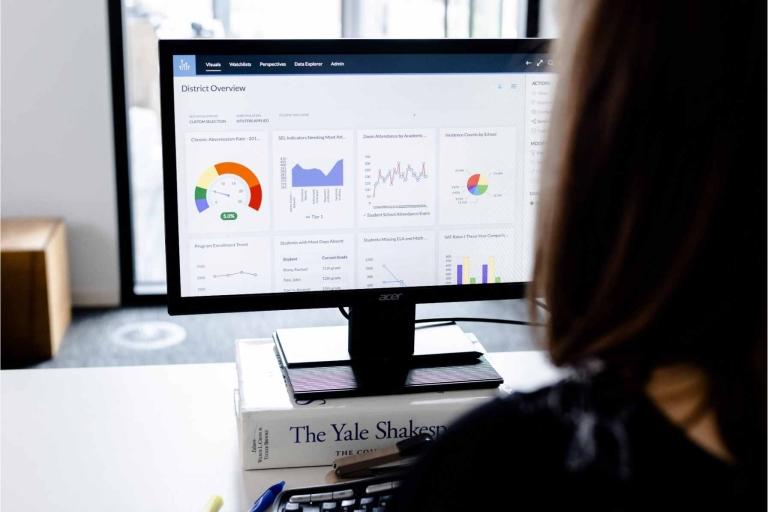Many districts are a few weeks into the start of the school year and for a large number of them, virtual learning is a big part of their reopening plans. Things are better than they were last fall, but teachers (and students and families) are still frustrated.
While professional development provided by instructional technology coaches on how to integrate technology tools into teaching is an imperative, it’s not enough for districts to provide one-off training, support is needed throughout the year. The best instructional coaching programs can provide ongoing support (see more on the value of edtech coaches during COVID-19 from Digital Promise), but they can be tough to scale at the level needed in the current environment. Teachers need support throughout the year and coaches need ways to provide it at scale.
We’ve pulled together 5 tips to help districts reduce teacher frustration throughout the year, beyond professional development. While these won’t solve every problem, they are critical components of a successful virtual learning experience.
1: Get organized at the district level
First and foremost, districts must make it easier for teachers to find and access district-approved and available edtech resources. This is important not just for paid edtech licenses, but also for free resources, to ensure the edtech tools teachers are using have been vetted at the district level.
The LearnPlatform by Instructure District EdTech Library makes this manageable for district administrators, with tools to configure your library and tag products based on district terminology and priorities for enhanced discoverability.
2: Make sure teachers know where to go
All the organization in the world won’t mean anything if you don’t communicate it effectively. This means training teachers on where they should go to find and access district-approved and available edtech resources and reinforcing that training in all follow-up communication.
There are thousands of digital learning resources out there to choose from; no teacher has time to wade through all of them. Giving teachers a single source of truth for approved edtech empowers them to make informed decisions about what’s right for their students.
3: Provide resources for effective use of core and supplemental edtech tools
Use that same system to connect teachers with resources on how best to integrate core edtech tools into their teaching. These resources can build on top of other professional development efforts and act as “refreshers” to help teachers use tools successfully.
District administrators can post assets, such as video tutorials, how-to guides, lesson plans or project ideas directly on a product page within their LearnPlatform District EdTech Library to share with teachers (and even parents). This is a great way for Instructional Coaches to support teachers at scale throughout the year.
4: Gather input
Most districts likely made some investments in new technology to support virtual and blended learning for the new school year. Gather feedback from teachers on what is and isn’t working for them, and incorporate that feedback into your practices, future professional development and product selection processes.
LearnPlatform provides a few ways to gather feedback from teachers on edtech tools. Teachers can grade any product using a formal grading rubric with these product grades aggregated and shared within a district’s EdTech Library. Districts can also solicit feedback on a specific set of tools--for example, all newly implemented tools--from specific teachers, saving 85% of the time it usually takes.
5: Repeat for families
Parents can be the most useful “teacher assistants” with consistent communication and support! Without it, well… life is challenging enough already. Teachers offer a direct conduit to families, which means they are not only dealing with their own frustrations, but also are facing the frustration of their students and families. Support your teachers by making it easier for students and families to access and use the resources they need.
With LearnPlatform, districts can enable a public-facing version of the District EdTech Library and control what information is shared with families and other external stakeholders. This can be a great way to meet specific privacy compliance requirements, and also offers an excellent opportunity to share family-specific resources on successful edtech use directly with parents and others who are supporting student learning at home.
Related Content
 inst-3step.jpg
inst-3step.jpgBlogs
 13lmsfeaturesthatbenefitstudentlearning.jpg
13lmsfeaturesthatbenefitstudentlearning.jpgBlogs
 community-homepage.jpg
community-homepage.jpgBlogs

